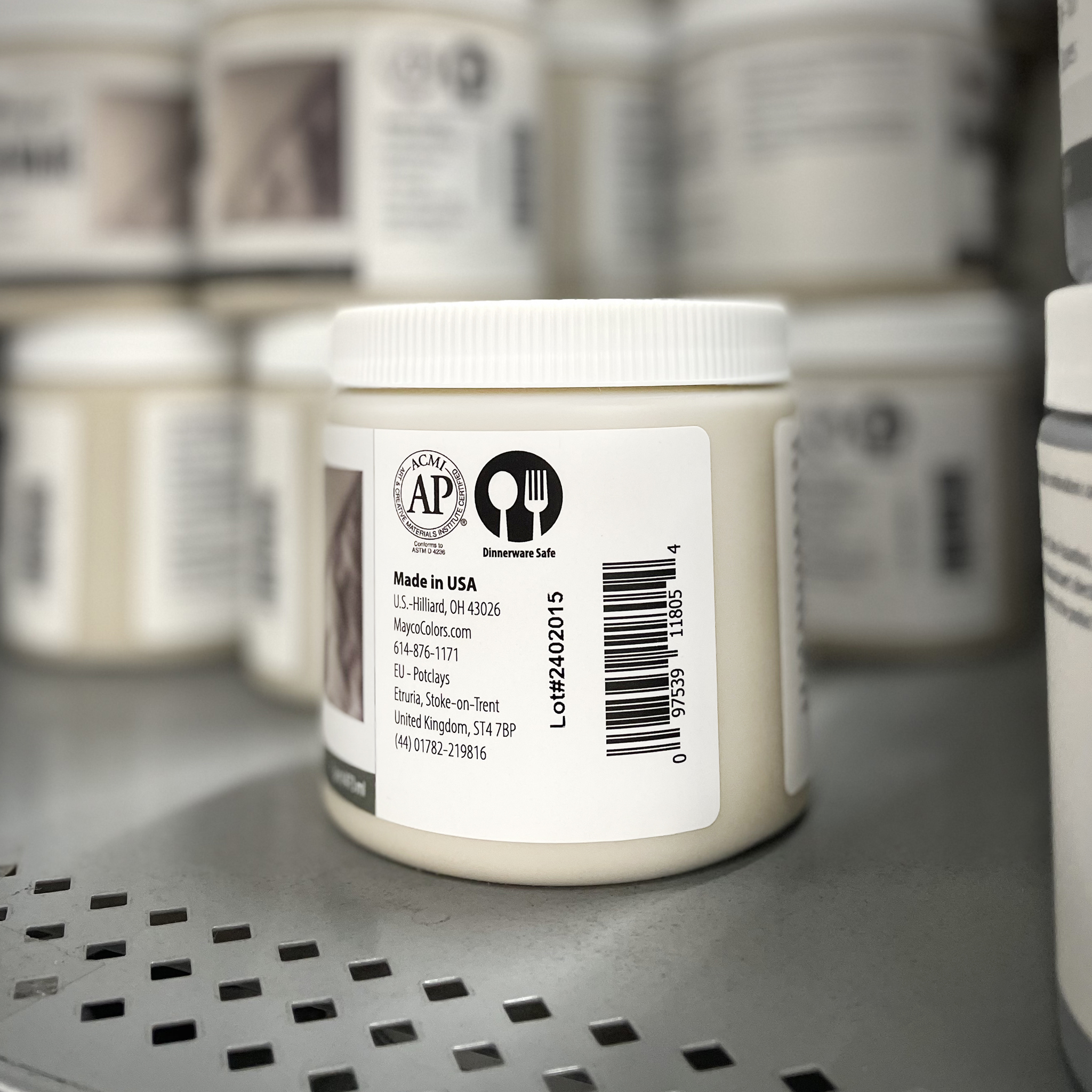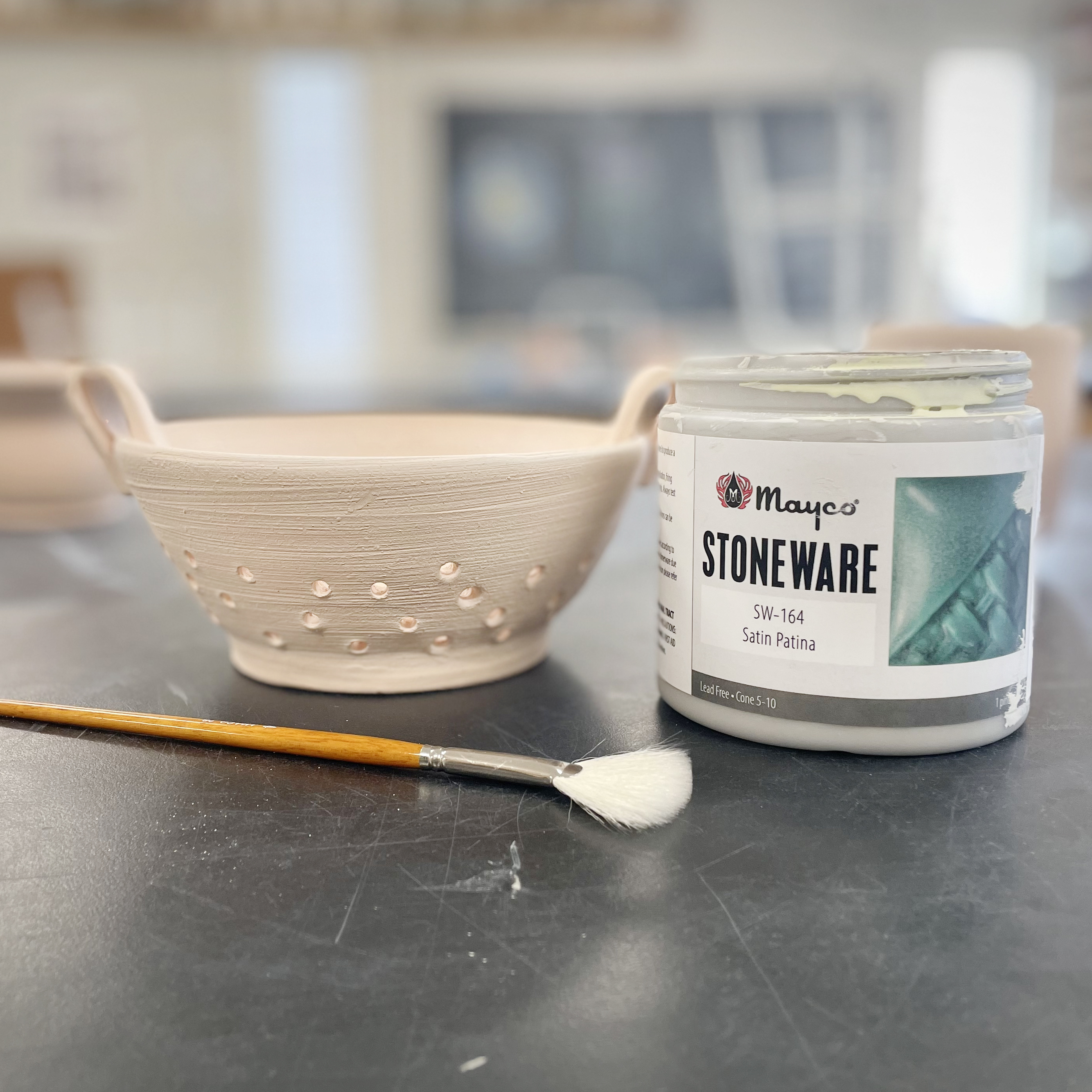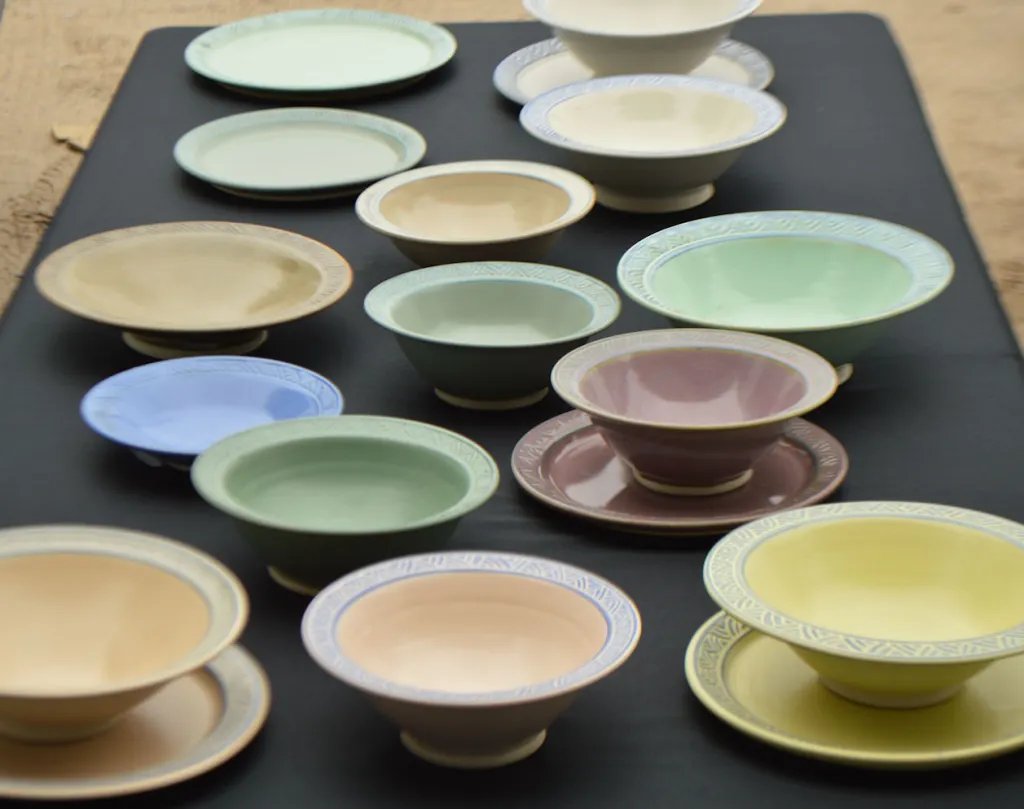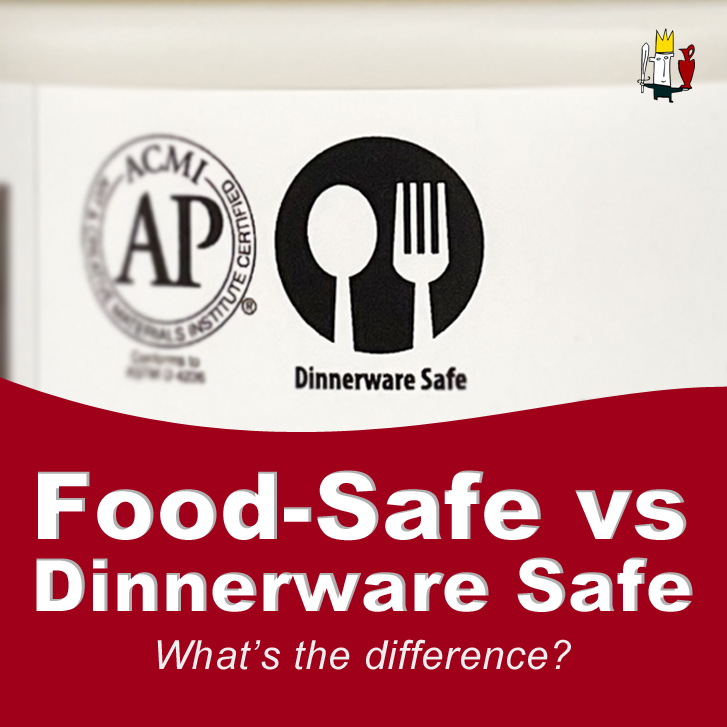When it comes to ceramic glazes, not all are created equal, especially if you’re considering creating pieces that will come into contact with food. At first glance some potential differences between Food-Safe and Dinnerware Safe glazes may come to mind but there may be more of a distinction than you think. This guide will help you understand the differences between food-safe and dinnerware-safe glazes, explore their uses, shopping tips, durability, and how they fare in microwaves and dishwashers.
Bite-Sized Answers
What’s the difference between food-safe and dinnerware-safe glazes? Food-safe glazes are non-toxic and safe for contact with food, while dinnerware-safe glazes also meet these criteria but are durable enough to withstand daily use.
When should each type of glaze be used? Use food-safe glazes for items that will hold food but won’t face heavy use. Dinnerware-safe glazes are best for everyday items like plates and cups.
What to look for when shopping for a glaze? Look for labels that specify “food-safe” or “dinnerware-safe,” and check for durability and resistance to acidity.
Which is more durable? Dinnerware-safe glazes, as they’re designed to withstand daily wear and tear.
Are pieces with these glazes microwave and dishwasher safe? Generally, yes, but always check the manufacturer’s recommendations. Some glazes may be susceptible to slight dulling of the vibrancy after repeated dishwasher use due to having a lower resistance to acidity. Other factors such as the type of clay you use and the firing temperature may also impact the microwave and dishwasher safety of a piece.
Are pieces with dinnerware glazes oven safe? It depends on the clay body and firing temperature, in addition to the glaze used. Check for “oven-safe” labels and manufacturer recommendations.
TIP: You can perform glaze leaching tests at home to ensure your glazes, whether custom made or commercially available, can withstand heavy use over time. For more information, check out these methods of performing glaze leaching tests.

Detailed Comparison
The main difference between food-safe and dinnerware-safe glazes lies in their intended use and durability. Food-safe glazes are essentially non-toxic and safe for contact with food, but they may not hold up well to the wear and tear of daily use, such as cutting on a plate or the thermal shock of a microwave. Dinnerware-safe glazes, on the other hand, are built to endure these daily demands while also being non-toxic and safe for food contact.
Food-Safe Glazes
Ideal for decorative pieces that will have food placed on them occasionally or for items like serving platters that don’t require daily washing.
Dinnerware-Safe Glazes
The go-to for everyday items such as bowls, plates, and mugs that will be used and washed frequently.
This is because dinnerware-safe glazes are specifically formulated to resist chipping, scratching, and crazing, ensuring that your ceramics look good as new for longer

Shopping for Glazes
When perusing glazes, the label is your best friend. Look for explicit mentions of “food-safe” or “dinnerware-safe.” However, the label is just the starting point. Consider the following:
- Acid Resistance: Some glazes can react with acidic foods. Dinnerware-safe glazes usually offer better protection.
- Texture: Smooth glazes are generally easier to clean and less likely to harbor bacteria.
- Firing Temperature: Some glazes develop their food-safe qualities only when fired to specific temperatures. Make sure to follow the manufacturer’s guidelines to achieve safe results.
- Compatibility with Clay: The interaction between the glaze and the clay body is crucial. Not all glazes work well with every type of clay, which can affect the final result and the durability of the piece. Ensure the glaze matches the firing temperature and expansion rate of the clay you are using to avoid issues like crazing or shivering.
Our Recommendation For A Superior Dinnerware Glaze
Enduro-Color Liner by Coyote is a line of restaurant quality dinnerware glazes that have been engineered for durability. These glazes offer protection from crazing, staining, knife marking, scratching, and chipping. They also have a stronger resistance to degradation from alkalis (dishwashing) or acids and leaching (lemon juice, etc.).
Image Via Coyote Clay Website | Artist: Martin Butt and Jim Moffat

In Summary
Choosing the right glaze for your ceramic project is crucial for both aesthetic and functional reasons. While both food-safe and dinnerware-safe glazes have their place in the pottery world, understanding their differences helps ensure your creations are not only beautiful but also practical for their intended use.


Leave a comment